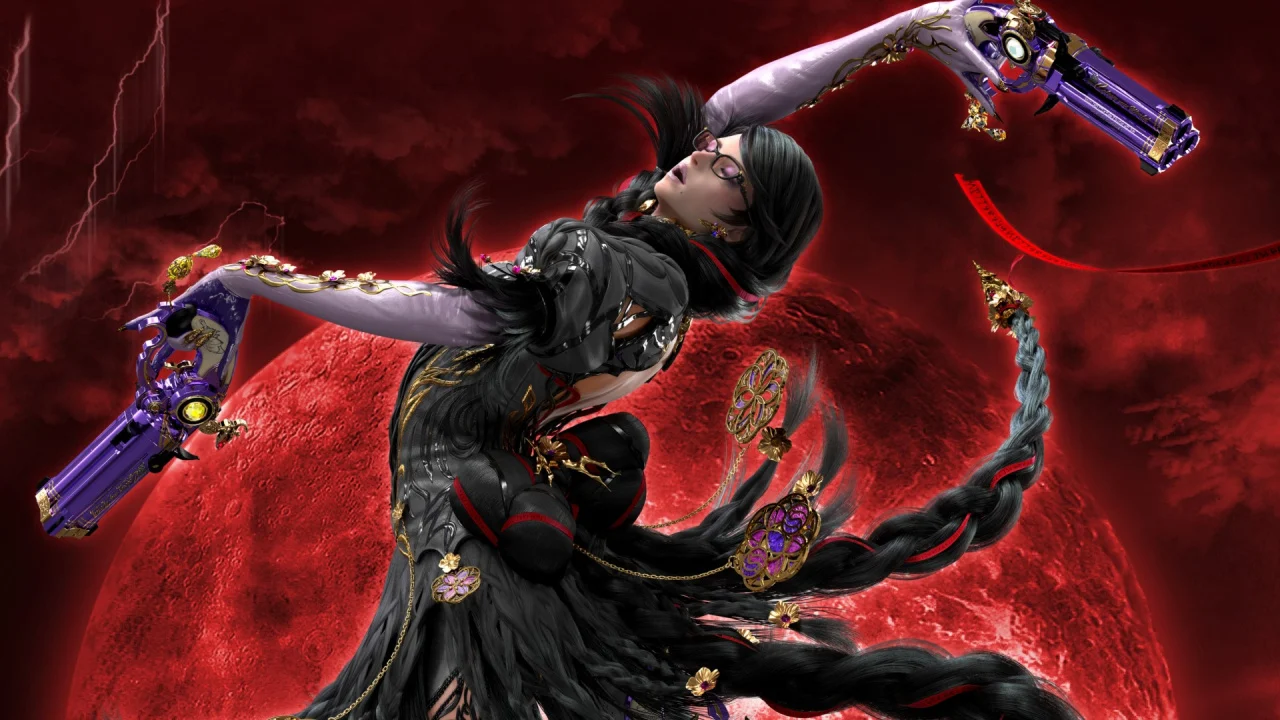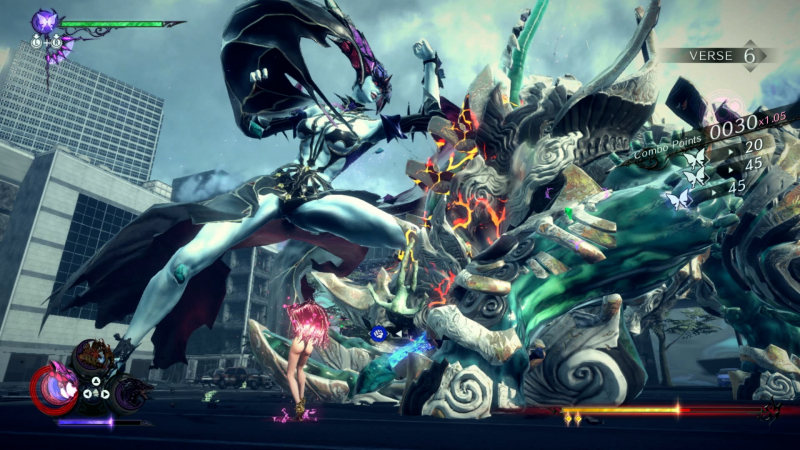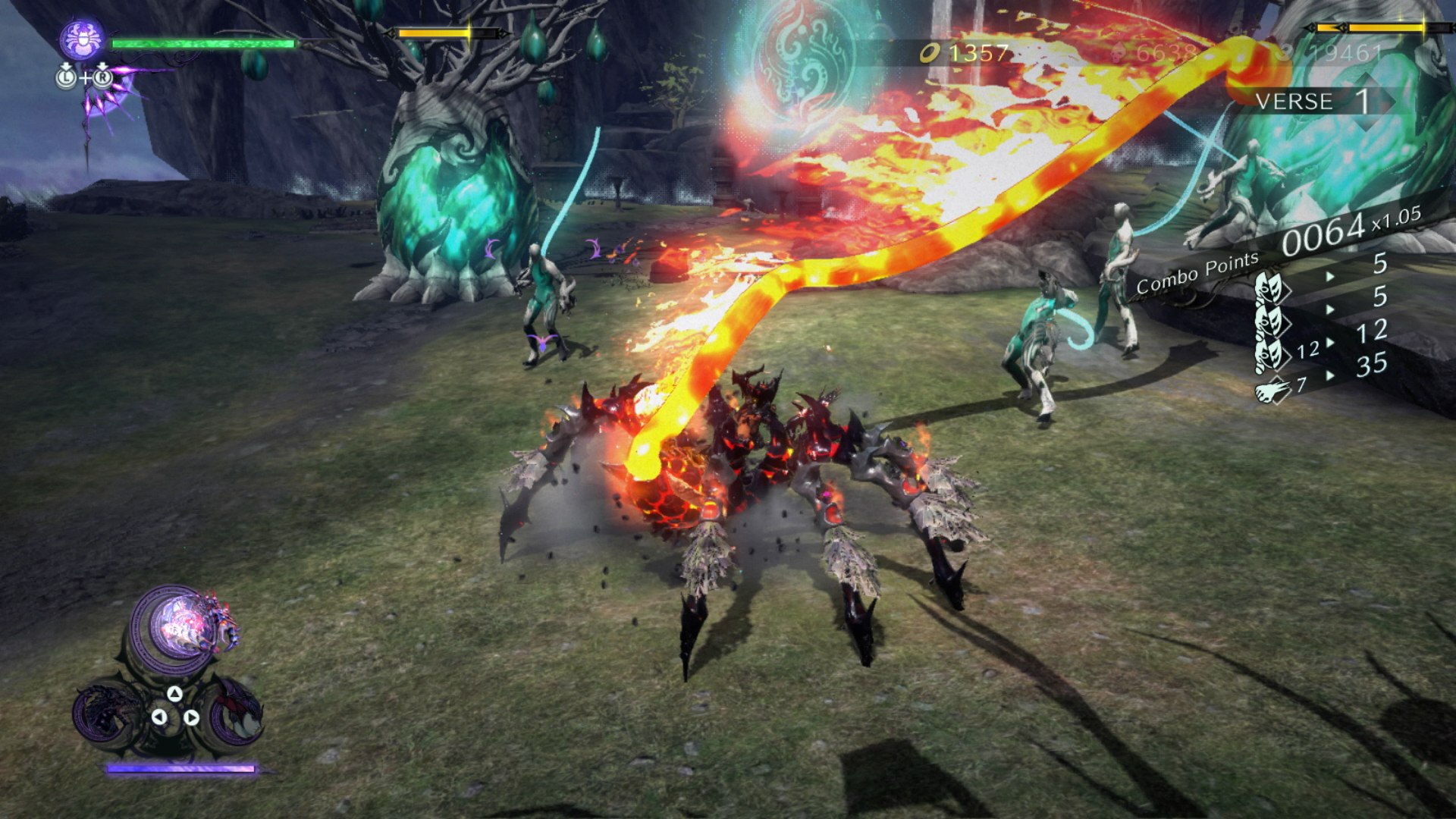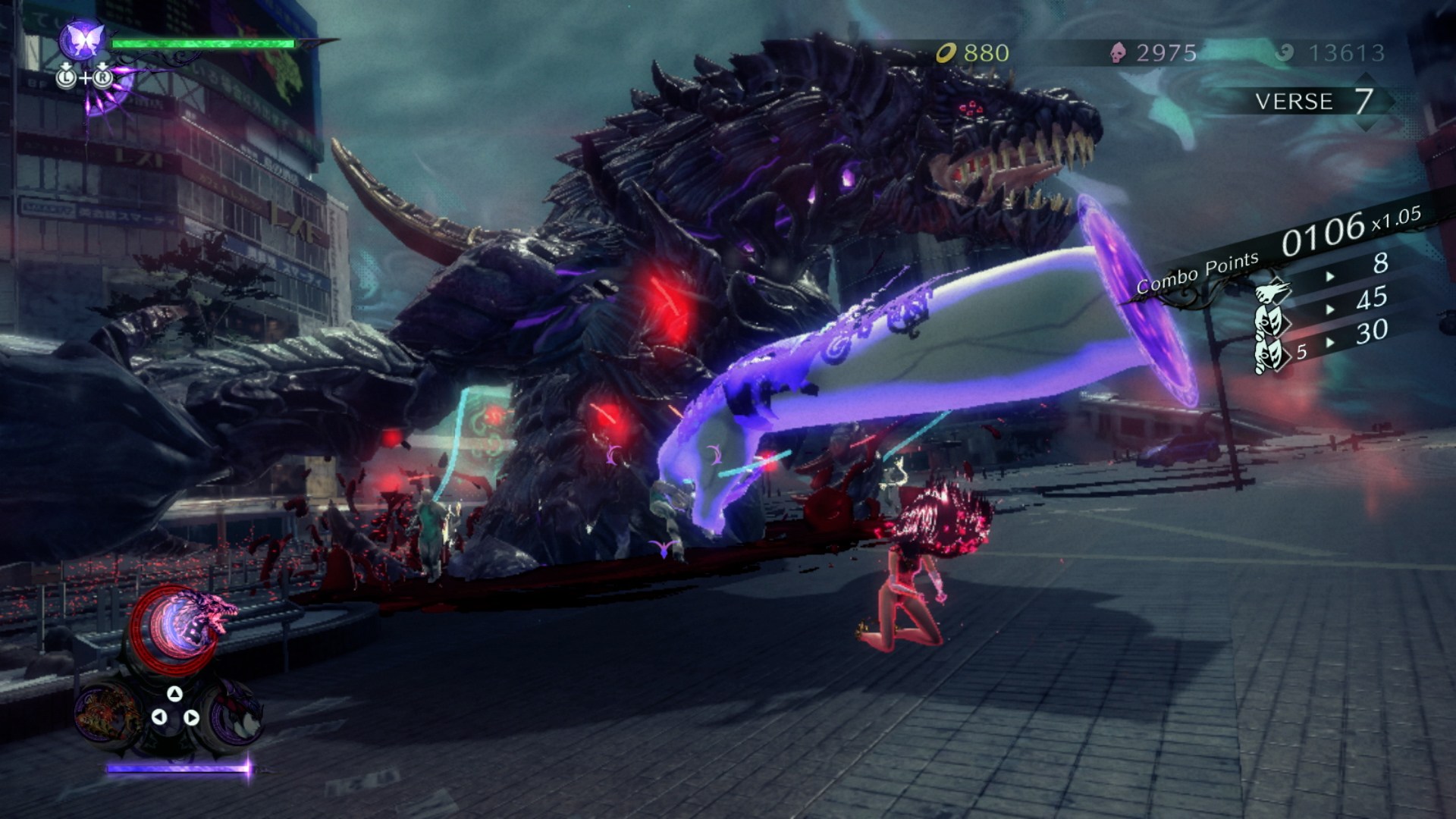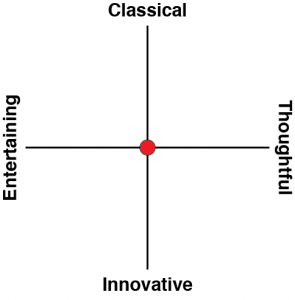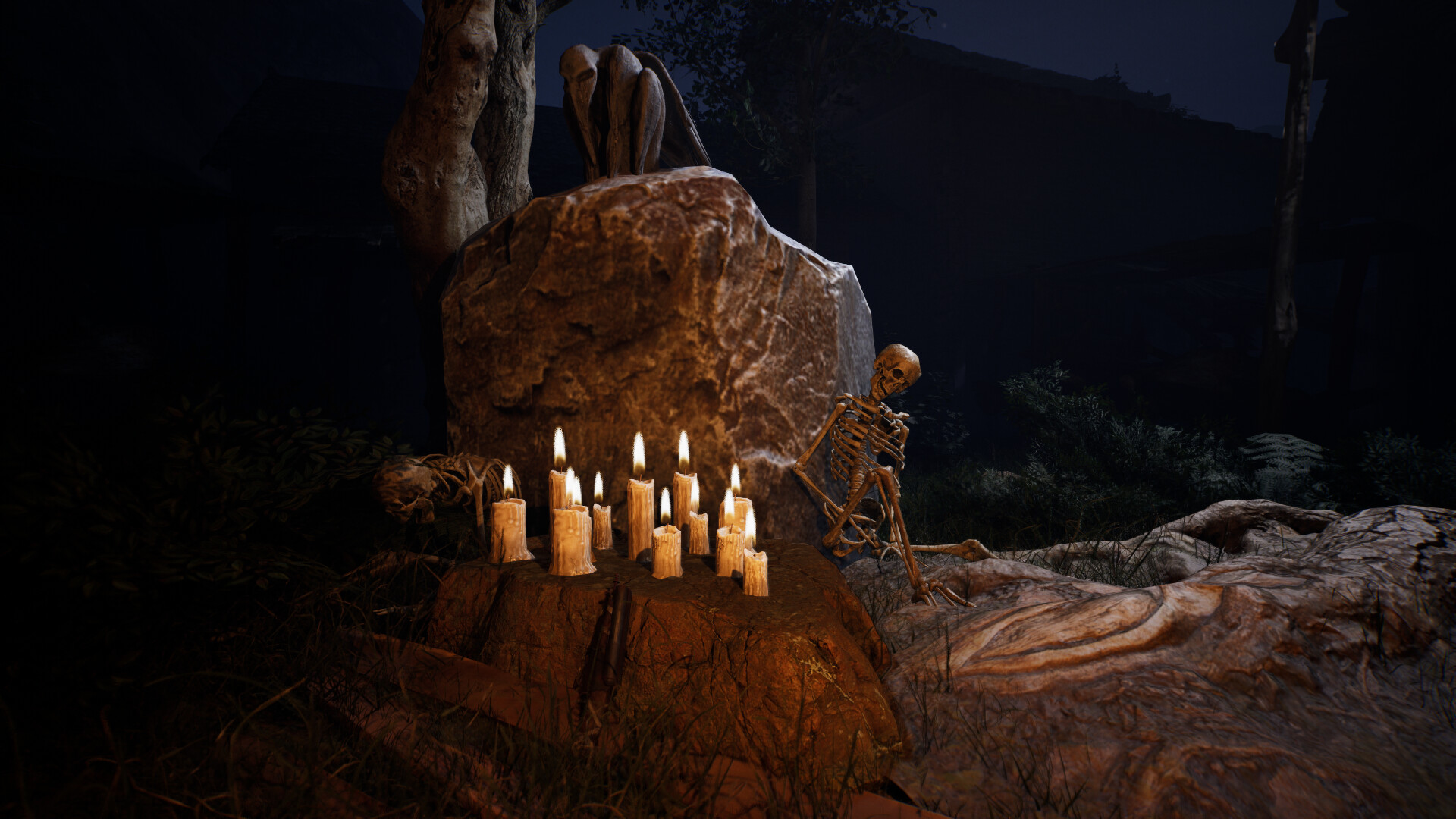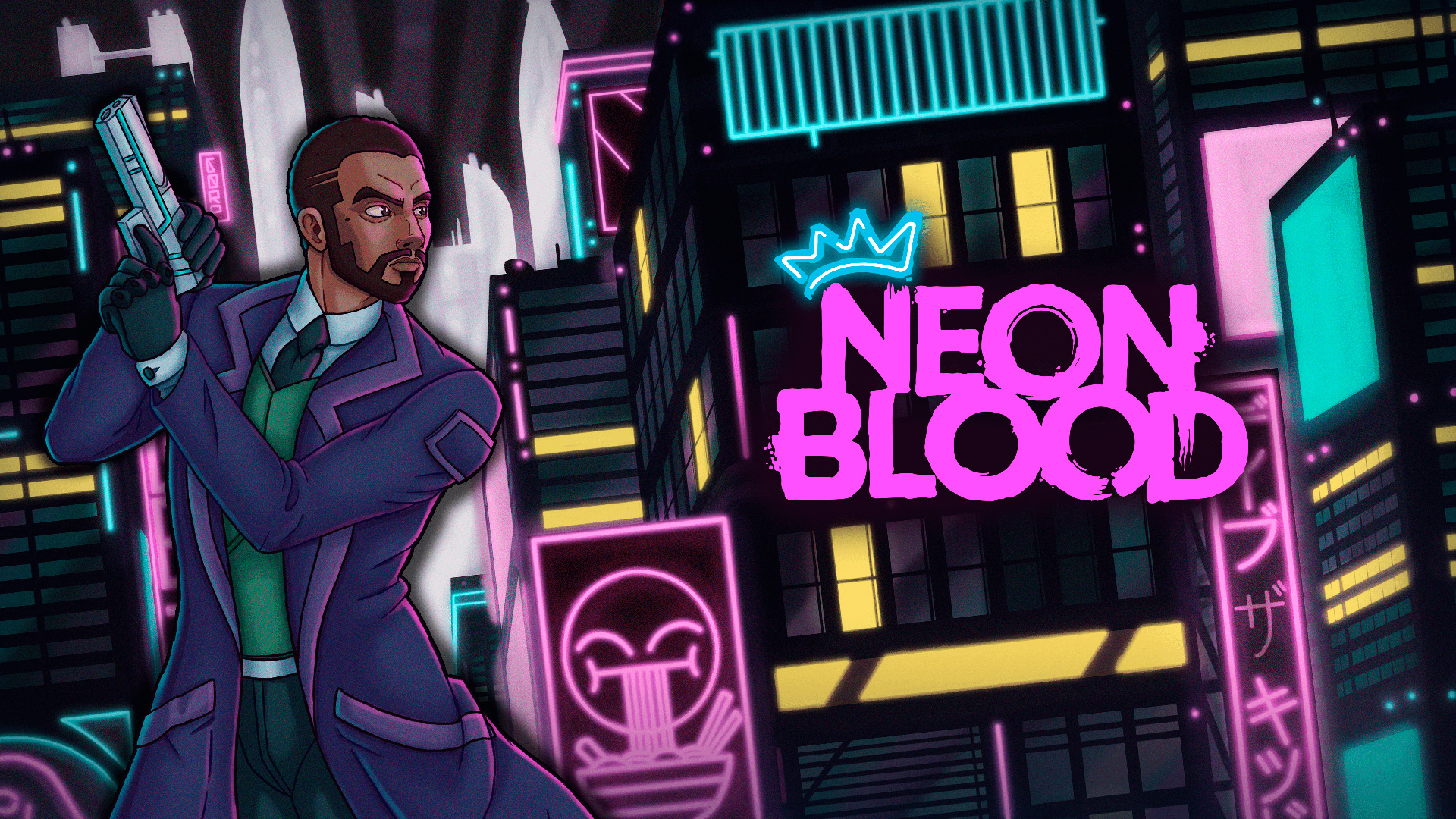It feels almost ironic that Bayonetta, one of the most grandiose action properties in gaming (if not the series that takes the crown), would somehow end up being exclusive to the Nintendo Switch. This is a series where the action, creatures, humour, narratives and setpieces are so fundamentally big on energy and over-the-top extreme that they become a kind of poetry, and your impression would always be that something like this should be on the most advanced hardware out there. However, it is the most humble console of all that hosts these mesmerising experiences. Bayonetta 3 needed to be bigger and more extreme than its predecessors. The one-upmanship from one iteration to the next was always going to be key to the series’ appeal. Thankfully, the team at PlatinumGames have somehow pulled it off.
This is a series about unbelievably powerful witches clashing with spiritual forces of monumental power, with the stakes being cosmic in scale. Multiple cosmos’ worth, in the case of Bayonetta 3, since this time around the forces of good(ish) find themselves arrayed against enemies that are looking to destroy the entire multiverse. As a concept, it is, of course, nonsense, and really just an excuse for the developers to pull in ever-more grandiose creatures of sheer lunacy into the already surrealistic world of Bayonetta. But unlike a certain Marvel film that had a sleep-inducing take on multiverses, here the concept works, and not least because the game is so deadpan about it.
Lesser developers would desperately try to get you to pay attention to how witty and clever they are. They’d conceptualise a Cheshire Cat for the game (which makes sense, given the Wonderland-like quality of multiverses) and then write dialogue along the lines of “this here is Cheshire. He’s a cat. It’s so wonderful that we have him to transport us around this land.” They’d do that just to make sure you fully appreciated how clever the writers were for figuring out how to use a motif. The team at PlatinumGames, much like the titular protagonist, are far more self-assured. When the Cheshire Cat simply shows up and the next thing you know you’re being peddled through the air by him on his magical penny farthing, the game just winks at you (proverbially) and then gets on with the action. It knows that you’re smart enough to figure this stuff out for yourself. In fact, for a game that’s all about summoning titanic demons and generally blowing up the cosmos, Bayonetta is surprisingly subtle and asks the players to pay attention to fully appreciate just how wild it can be (and then the point that it’s making by being that way).
Bayonetta has always had a complex combat system, inspired heavily by its genre peer, Devil May Cry. However, in many ways, Bayonetta’s combat system is the more complex, and this comes to its zenith in the third. At first, it’ll seem like a button masher that’s almost too fast to see. Of course, it’s not, and you’ll quickly learn about the importance of dodging (and/or parrying, depending on the character you’re controlling), how to make good, tactical use of the massive monsters you can summon to the field to help you battle, and the nearly impossibly-complex combo system. I’ll admit here in this review I am neither good at any of this nor can I give it the proper breakdown it deserves. Bayonetta simply demands faster reflexes and quick thinking than I am capable of, and while I recommend playing it on the highest difficulty possible (because it becomes so much more rewarding when you’re not cruising), for a lot of people it’s going to be testing on any level.
It’s a genuine and enjoyable challenge, though. Even when playing in handheld mode, I never felt like the relatively small screen of the Switch meant that I was struggling to follow the action. Even though the screen could be rich with detail I never felt like the engine was stuttering and causing me to mistime things. There are compromises, but PlatinumGames has been clever here. Outside of combat, you’re going to start noticing some bad pop-up and you’ll realise that the world’s environments, when they’re not crawling with enemies, are actually fairly dull. It’s just that you’ll never spend too long outside of combat before the fireworks start anew and, in the dazzling speed and colourful fireworks of it all, the aesthetics and energy are impeccable.
In general, the only weakness in Bayonetta’s gameplay come outside of combat, and perhaps PlatinumGames erred slightly in giving us a touch too much downtime. The platforming and “puzzle” parts are generally uninspired and uninteresting. The game would have been a shave shorter without them, and the better for it. I do wonder whether the differences between some of the playable characters might throw some people a little, too. One of the new characters has a combat system that more heavily relies on her ability to parry than dance out of the way and dodge, and it is a different feeling. For a game this challenging, that “different feeling” could easily translate to “frustrating” for some, though I enjoyed the challenge of learning how to walk for a second time (as I would expect most Bayonetta fans would).
There will be two areas that I assume are going to dominate the discourse around Bayonetta. One was the voice acting. It was already controversial enough, with the original voice of Bayonetta (Hellena Taylor) not returning for this game, but then that discourse went nuclear after she claimed that she was offered a ridiculously low sum to perform in the game and, as it turns out, that claim was itself false. I’m not here to talk about any of that. It’s also irrelevant to the quality of the voice acting that’s in the game, but I’ll say that it is disappointing that the performances in the game will be overshadowed by it, because Jennifer Hale does an excellent and versatile job of voicing Bayonetta, and the supporting cast around her add to the fun. It’s cheesy, silly, and way over-the-top, which suits the aesthetics of the game perfectly and underpins much of its charm.
The other element is of course the sex. You would hope that this “debate” has already played out, but it’s a discussion point that the audience and critics love looking for opportunities to reignite, and Bayonetta is an open barrel filled with 100 per cent alcohol in this regard. Half the audience falls on the side of the “this is grotesque sexism” (shout out to everyone’s favourite puritan Web forum), while the other half (i.e. the ones with basic critical reasoning skills) recognise the way that Bayonetta is positioned as having agency at all times and is an incredibly empowered character. With that being said the tone might have been eased back ever so slightly with this game. I acknowledge that this is probably more perception than reality, but it did seem like the developers dialled back on the infamous crotch shots in particular. There’s still the hair-covering-body nudity and highly sexualised strut, and the game will still be firmly considered “fanservicey”, but perhaps PlatinumGames did learn a little something from Yoko Taro and NieR Automata and do things somewhat more classily this time.
Or perhaps not. Like I said, that is going on perceptions (and possibly skewed ones since I haven’t played either previous Bayonetta for years), not actual counts of gratuitous crotch shots.
Either way, that conversation piece really shouldn’t happen again. Even if you somehow miss that the hyperbolic treatment of sex in Bayonetta makes the game an effective deconstruction and criticism of it – much like how other hyperbolic protagonists like Travis Touchdown and Juliet Starling are in their respective properties – there’s the reality that Bayonetta is perhaps the most supremely powerful protagonist we have across the entire scope of video games. One of the core problems with sexism is that it acts to disempower women, which Bayonetta is firmly opposed to.
With all of that said, the blessing of Bayonetta 3 is also, potentially, its curse. While it continues to push for even more extreme nonsense, it is essentially the same core as its predecessors. Fans will love it, and the handful of additions that add even more layers to the combat (such as the aforementioned new character, as well as the ability to do a lot more with the big beasts that Bayonetta can summon. The flip side to that coming is that it does mean it’s going to be inaccessible for some, and far too overwhelming for others. I’m not sure that PlatinumGames cares, since you absolutely have to have played the previous two Bayonetta games to be able to puzzle through what this game will throw at you. And that’s fine, however, it should be noted that if the series has now piqued your interest, you’re best off starting by going back to the first (which, thankfully, is on Switch anyway).
It’s good that we’ve had a creative vision as pure as Bayonetta, and now we’ve seen the developers push it as far as it will go. Thanks to excellent characterisation, a true understanding of how to work with both hyperbole and surrealism within a narrative, and a ridiculously complex, but rewarding, combat system, Bayonetta 3 has been well worth the wait.
